Sanezumi Fujimoto
15-07-1910
Birthday
Cancer
Zodiac Sign
-
Genres
0
Total Films
Also known as (male)
Dalian, China
Place of Birth
15-07-1910
Birthday
Cancer
Zodiac Sign
-
Genres
0
Total Films
-
Also Known As (male)
Dalian, China
Place of Birth
15-07-1910
Birthday
Cancer
Zodiac Sign
-
Genres
0
Total Films
Also known as (male)
Dalian, China
Place of Birth
15-07-1910
Birthday
Cancer
Zodiac Sign
-
Genres
0
Total Films
-
Also Known As (male)
Dalian, China
Place of Birth
actor
0 Works
producer
123 Works
director
123 Works
writer
0 Works
other
0 Works

Glowing Autumn
A very beautiful Japanese woman is in love with Persian carpets. She is being chased by lecherous Saburi Shin and a handsome young photographer. Lecherous Saburi Shin knows what she wants, and is able to produce it for her.Year:
1978

The Gate of Youth Part 2
Mid 50s: the trials and tribulations of Shinsuke Ibuki, freshly arrived in Tokyo from Kyushu.Year:
1977

The Gate of Youth
Mainly the story of Shinsuke and his stepmother, ranging from Shinsuke's infanthood to his mid-teens. Coal workers and the mines dominate nearly every aspect of the life of the characters. Shinsuke's father dies while bravely using dynamite to rescue a group of trapped Korean miners. Several older men attempt to help he and his mother cope, including a kind Korean and a Harley-riding yakuza.Year:
1975

The Black Battlefront Kidnappers
A taut, economical policier-cum-gang-hostage thriller.Year:
1973

Little Adventurer
Mickey, a smart student from England, is on his trip to Japan for vacation. He meets with a Chinese girl Lin Fang on the way. They each have the same model of camera. But they have their cameras exchanged without their knowing it prior to their departure.Year:
1973
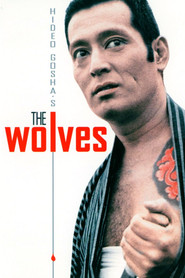
The Wolves
After going to prison for killing the boss of the Kanno gang, Seji Iwahashi (Tatsuya Nakadai) gets released early -- only to find that his former gang has merged with the Kannos. But with bitter resentments lingering on both sides, how long will it be before the bloodshed begins anew? Set in 1926 Japan, this serpentine crime thriller from director Hideo Gosha also stars Toshio Kurosawa and Isao Natsuyagi as Iwahashi's closest ally.Year:
1971

The Battle of Okinawa
The Americans are swiftly closing on Okinawa, an island just south of the Japanese mainland. The Imperial command sends top generals and several army divisions to defend it at all costs. The mission quickly degenerates as vital resources and troops are diverted to other islands. After a civilian evacuation ends in tragedy most of non-combatants are forced to remain on the island. Many convert to soldier status. Tokyo sends mixed messages that squander time and resources, as when they order the defenders to build an airstrip for aircraft that never come. The truth soon becomes obvious: the high command decides that the island cannot be held and effectively abandons the Okinawan defenders. When the Americans land many troops are deployed in the wrong places. As the slaughter mounts, a suicidal attitude takes hold. Okinawa becomes a death trap, for civilian volunteers and non-combatants as well.Year:
1971

To Love Again
A Japanese girl and a French boy make strides in overcoming the cultural barriers that prevent them from fully expressing the love they have for one another.Year:
1971
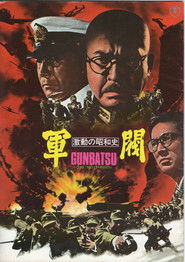
The Militarists
Year:
1970

The Scandalous Adventures of Buraikan
An outlaw pushes the residents of Edo's red light district to rebel against a growing number of stifling, moralistic laws.Year:
1970
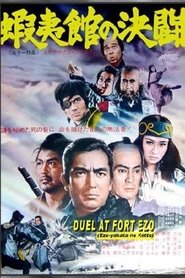
Duel at Fort Ezo
1864. Samurai Shinbei is sent in a secret mission to Ezo, in the North of Japan, to stop riots of villagers commanded by Jirozaemon. A Russian count's daughter, the village leader's daughter and a secret treasure add up to the adventure.Year:
1970
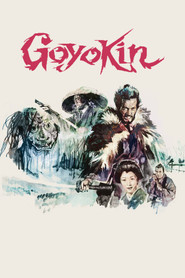
Goyokin
A guilt-haunted samurai warrior attempts to stop a massacre taking place.Year:
1969

My Brother, My Love
Year:
1968

Good-bye Moscow
Ex-jazz pianist turned promoter finds he is successful, but empty. When an entrepreneur sends him to Moscow with a jazz combo, he falls in with the dissident youth of the city, and again finds life empty.Year:
1968

Devils-in-Law
Year:
1968

Two in the Shadow
A man is involved in a fatal car accident, and though he is blameless, his company transfers him to a remote branch in a small town. Before he leaves, he gives the man's widow a large sum of money that she uses to move back to her hometown.Year:
1967

Eyes, the Sea and a Ball
An inspirational teacher is the focus of this Japanese drama. After his friend kills himself, Natsuki takes a teaching job on an isolated island. His new students, the children of ignorant fishermen, can see no value in education; therefore, they have no desire to learn. Natsuki then introduces the children to volleyball. The kids are immediately fired up by the game. After winning the island tourney, they go on to win the national championship. Suddenly learning has taken on a whole new dimension. Meanwhile Natsuki gets married. Unfortunately for his wife, he refuses to leave the island.Year:
1967

Pomegranate Time
Comedy-drama about university tennis players.Year:
1967
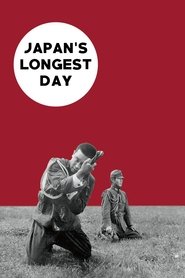
Japan's Longest Day
Following the detonation of the atomic bombs on Hiroshima and Nagasaki, the Japanese military and the government clash over the demand from the Allies for unconditional surrender. Minister of the Army Anami leads the military officers who propose to fight on, even to the death of every Japanese citizen. Emperor Hirohito, however, joins with his ministers in asking the unthinkable, the peaceful surrender of Japan. When the military plots a coup to overthrow the Emperor's civilian government, Anami must face the choice between his desires and loyalty to his Emperor.Year:
1967

The Young Ace in the South Pacific
The 10th film in the Wakadaisho series, the Young Ace Yuichi Tanuma travels to Hawaii to train in deep-sea navigation. The Young Ace comes to the rescue of various women in peril, teaches a would-be restauranteur how to make sukiyaki, thwarts the romantic aspirations of his rival Ao Daisho, and competes in the finals of the Japan Judo Championship at the Nippon Budokan. Shot across various locations across Hawaii, Tahiti, Saipan, and Tokyo.Year:
1967
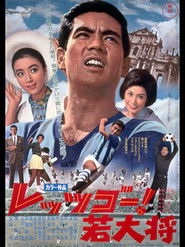
Let's Go! Young Guy
College student Yuuichi Tanuma is fired up for Nationals where his university Kyonan will face off against their rivals, Seihoku. Yuuichi has his sights set on winning football gold, but his father, who wants him to take over his sukiyaki restaurant, isn't too keen on this. Set in Kyoto, Hong Kong, and Macau, we follow Yuuichi as he falls in love and chases after his dreams.Year:
1967

Come Marry Me
Masako is a humble waitress who has a chance encounter with playboy Tamotsu. With the aid of his sister, Tamotsu seeks to win Masako's affection despite the disapproval of his wealthy parents and Masako's own feelings towards the working-class cabbie Noro.Year:
1966

The Daphne
Four sisters are all named after flowers. While the two youngest are married, the eldest two remain single, much to the annoyance of their long-suffering mother. The mother and her brother try various schemes to find husbands for them.Year:
1966

Forever With You
Year:
1966

Arupusu no wakadaishô
Seventh movie of the Wakadaishō series directed by Kengo FurusawaYear:
1966

Moment of Terror
When an only child is struck by a car and dies, the child's mother seeks vengeance against the driver in this thrilling drama. The car was driven by the wife of a company president who is having an affair. The woman's husband manages to buy silence about the incident, but the victim's mother discovers the identity of the driver. After she secures a job in the home of the company president and his philandering spouse, the woman plans to murder the couple's son when he reaches the age of her late son.Year:
1966

The Sword of Doom
Ryunosuke, a gifted swordsman plying his trade during the turbulent final days of Shogunate rule, has no moral code and kills without remorse. It’s a way of life that leads to madness.Year:
1966

The Thin Line
Tashiro coincidentally meets his best friend Sugimoto in a bar very close to the apartment in which Sugimoto’s wayward wife is found dead. Although Tashiro is not a suspect in the police investigation, he is racked with guilt and confesses to his wife, Masako. In an effort to further relieve his tortured sense of guilt, he then confesses to Sugimoto. Neither his wife nor his friend can believe that he could have been involved.Year:
1966
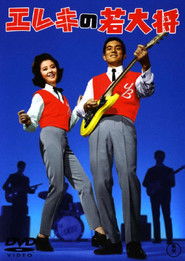
Campus A Go-Go
Young Guy (Kayama) competes in an electric guitar competition and plays American-style football. Released alongside Invasion of Astro Monster.Year:
1965
A Smell of Money
Banjun organizes a group of con men to fleece the greedy and rich.Year:
1965

Beast Alley
"When human beings venture too far along a trail made by wild beasts, it is said, they quite often discover themselves on a road of no return." Based on the novel of the same name by Seichô Matsumoto.Year:
1965
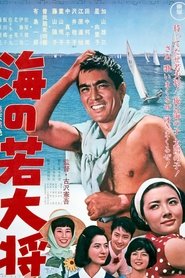
Young Guy at Sea
Eternal young guy, Yuzo Kayama stars in this fifth installment of the Young Guy series. Young Guy returns to the swim team from the first movie, boards his rival Blue Guy's boat, and meets a young woman on a small island.Year:
1965

The Naked Executive
The executive director of the «Chuo Shoji» company, Hidaka Shiro, is called a "demon of work", but the hostess of the bar calls him "the loneliest person in Japan." He lost his wife ten years ago and has been living as a widower ever since. He plotted to marry off his 22-year-old daughter Keiko for political gain, but Keiko is in love with Okuda, who is her father's subordinate. A story full of sadness and joy, depicting a man gripped by different thoughts, as an employee of the company and a father.Year:
1964

You Can Succeed, Too
A group of friends try to find success in corporate Japan.Year:
1964

Mothra vs. Godzilla
Journalists Ichiro Sakai and Junko cover the wreckage of a typhoon when an enormous egg is found and claimed by greedy entrepreneurs. Mothra's fairies arrive and are aided by the journalists in a plea for its return. As their requests are denied, Godzilla arises near Nagoya and the people of Infant Island must decide if they are willing to answer Japan's own pleas for help.Year:
1964

Yearning
War widow Reiko rebuilds and runs the grocery shop in the house of her husband's family. Many years later, their business is threatened by a newly built supermarket and Reiko's in-laws plan to convert their small shop into a supermarket, to her detriment.Year:
1964

A Woman's Life
A woman remembers her own marriage when dealing with the love life of her son.Year:
1963

The Elegant Life of Mr. Everyman
A salaryman's drunken ravings in public attract the attention of journalists who coerce him into telling them his life's story.Year:
1963

Honolulu, Tokyo, Hong Kong
The third and final chapter of MP & GI's Toho Trilogy expands the geographical reach of the franchise, taking stars Lucilla You Min and Takarada Akira across the Pacific to Hawaii, where scenic travelogue passages add to the cross-cultural affair. Also expanded is the romantic entanglement, as the love birds find themselves embroiled in an intricate love pentagon! By then a rising star of Toho boasting multiple talents, Jimmy Lin was bestowed the unenviable task of playing one of the five, the Lucilla character's long-lost fiancé…Year:
1963

The Young Ace in Hawaii
Fourth entry in Toho's Wakadaishō series directed by Jun Fukuda and released on a simultaneous screening with Matango. Filmed on location in Hawaii.Year:
1963
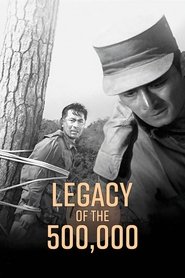
Legacy of the 500,000
During World War II, Japan sends gold to the Phillipines. After the war, the gold is lost in the bay of Manille. Former soldier Takeichi Matsuo is now working as a business executive. He meets Mintsura Gunji, the boss of a large company, who offers him to go to the Philippines and bring back the gold.Year:
1963

Born in Sin
A dark family secret sends a 21-year-old French student (Hoshi) on a journey of self-discovery.Year:
1962
My Hobo
Story of a resourceful hobo (Kobayashi), a con woman (Takamine) who pretends to be a victim of the Nagasaki A-bomb, and two orphaned children who become a most atypical Japanese family.Year:
1962
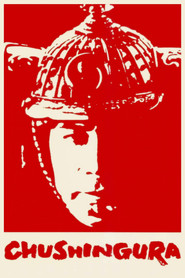
Chûshingura
After their lord is tricked into committing ritual suicide, forty-seven samurai warriors await the chance to avenge their master and reclaim their honor.Year:
1962

A Wanderer's Notebook
Considered one of the finest late Naruses and a model of film biography, A Wanderer’s Notebook features remarkable performances by Hideko Takamine – Phillip Lopate calls it “probably her greatest performance” – and Kinuyo Tanaka as mother and daughter living from hand to mouth in Twenties Tokyo. Based on the life and career of Fumiko Hayashi, the novelist whose work Naruse adapted to the screen several times, A Wanderer’s Notebook traces her bitter struggle for literary recognition in the first half of the twentieth century – her affairs with feckless men, the jobs she took to survive (peddler, waitress, bar maid), and her arduous, often humiliating attempts to get published in a male-dominated culture.Year:
1962

Our Failures
Tells the story of Shintaro, a lawyer who quits his job to work at a camera factory, and his love adventures.Year:
1962

Star of Hong Kong
Wang Xinglian returns from her studies in Japan to visit her father in Hong Kong where she has an encounter with the young Japanese Hasegawa Toru. The two meet again and fall in love in Hokkaido when Wang and her best friend Sugimoto Kanako are going on a holiday. Urged by her friend Zhang Yingming to concentrate on her studies, Wang remains ambivalent about the relationship, and is even more upset to realise that Sugimoto is in love with her fellow countryman. Feigning an engagement with Zhang, Wang initiates a break-up with Hasegawa and finds work in Singapore after graduation. Hasegawa learns the real cause of the break-up from Sugimoto in Hong Kong. A frenzy search finally leads to a reunion and a proposal in Kuala Lumpur. However, their love is doomed by a twist of fate as Wang must leave to see her desperately ill father in Hong Kong while Hasegawa has to leave for America to pursue his career.Year:
1962

Ayako
An ambitious young woman uses her sex appeal to solve financial problems in her family, including a brother in debt to the yakuza, and a father who stole money from his firm to repay his son's debt.Year:
1962
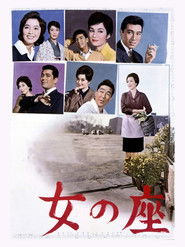
The Wiser Age
Drama about the lives of the five daughters and daughter-in-law of a store owner.Year:
1962

3 Dolls and Baby Gang
Based on the comic by Fuyahiko Okabe.Year:
1961

Different Sons
In the middle of the period of high economic growth in Japan, a family is thrown into disarray over work, money, and romance. Their father's sudden unemployment later in life causes friction among the siblings of the Akagi family. Kensuke, a salaryman at a top company, refuses to support his parents while his brother, Shoji, determines to care for them despite only working as a taxi driver. The concern over money affects Noriko's own love life as she courts a wealthy salaryman to the chagrin of her mechanic boyfriend.Year:
1961

The End of Summer
The family of an older man who runs a small sake brewery become concerned with his finances and his health after they discover him visiting an old mistress from his youth.Year:
1961

The Last War
A Japanese family is torn apart by the tensions of an avoidable nuclear world war between the superpowers.Year:
1961

Acchan no bebi gyangu
Based on the comic by Fuyuhiko Okabe.Year:
1961

Sir Galahad in Campus
The first instalment in Toho's popular Wakadaishō (Young Guy) series.Year:
1961

A Night in Hong Kong
Romantic melodrama set in contemporary Hong Kong, Japan and Laos. Hiroshi Tanaka (Takarada) is a Japanese journalist on assignment in Hong Kong who meets and falls in love with Wu Li Hung (Ming). He proposes to Wu Li but she rejects him because of her distaste for mixed marriages (her mother was Japanese but deserted her family and returned to Japan during WWII). Tanaka locates Wu Li’s mother and unsuccessfully tries to reunite them, but eventually Wu Li accepts his proposal. A joyous Tanaka flies off to Laos to finish an assignment but on the eve of his wedding he is killed there.Year:
1961

Challenge to Live
An employee at an oil cartel (Mihashi) is haunted by an act years before when he euthanized a fellow soldier when the two were adrift at sea during the Pacific War. Matters are complicated further when he falls in love with the soldier's younger sister (Tsukasa).Year:
1961
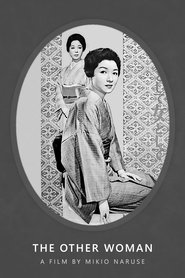
The Other Woman
In "The Other Woman" the children of a distinguished professor find that the woman they have come to regard as their racy and slightly disreputable Ginza aunt is really their mother.Year:
1961
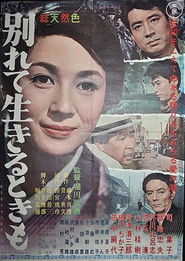
Wakarete ikiru toki mo
A Hiromichi Horikawa movieYear:
1961
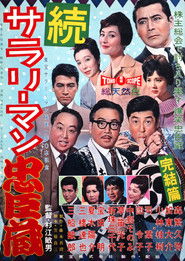
The Masterless 47 – Part II
Year:
1961

Happiness of Us Alone
The story is of two people. One is deaf, the other deaf and mute. They marry after meeting at a school reunion, and the film follows their trials and tribulations ... and joys.Year:
1961
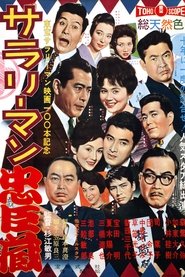
The Masterless 47
Part one of The Masterless 47.Year:
1960

Master Fencer Sees the World
A historical drama that depicts the touching beauty of world obsession and human love in the style of light comedy, in the center of which is a young man who has a master license menkyo kaiden in the art of swordsmanship, but weak against lies and women. A remake of Bungaku no Issue, shot by Sadao Yamanaka in 1933.Year:
1960

The Lovelorn Geisha
A woman and her daughter are in love with the same man, a chef at the restaurant that the mother manages. He is slightly crippled from frostbite in his years in Siberian labor camps and considers himself 'already dead'.Year:
1960

The Blue Beast
Tatsuya Nakadai plays a scheming low-level executive who plays labor against management and uses anyone he can to further his career in this moral drama. When things get too hot, he bails and goes to work for a prominent politician (Koreya Senda). Soon he has impregnated the daughter (Yoko Tsukasa) of his boss, but he figures marriage will solve his current problems. His happiness is short-lived when he is stalked by a union radical he once double-crossed who now seeks vengeance.Year:
1960

The Dangerous Kiss
Starring Akira Takarada as a lightweight boxing champion.Year:
1960
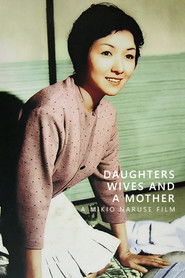
Daughters, Wives and a Mother
Sanae is left a widow after her prestigious husband dies, but holds the proceeds of a million yen insurance policy. Being childless, her former in-laws have no objection to her return to her own family.Year:
1960

Beyond the Hills
Story of young love in the hills.Year:
1960

The Three Treasures
The legend of the birth of Shintoism. In Fourth Century Japan, the Emperor's son Ouso expects to succeed his father on the throne, but Otomo, the Emperor's vassal, prefers Ouso's stepbrother, and conspires to have Ouso die on a dangerous mission he has contrived. But Ouso prevails in the mission and returns to his father's castle under a new name, Prince Yamato Takeru. Otomo plots to have the Prince sent into even greater danger, but Otomo is unaware that the gods have favored the Prince and the outcome is far from what any of them expected.Year:
1959

Saga of the Vagabonds
Lord Taro must deliver a money chest but is robbed by brigands led by Jibu. One of Jibu's men, Rokuro, steals the money from Jibu, but after meeting and befriending Taro, Rokuro decides to return the money to Taro. But Taro's unscrupulous brother Jiro falsely accuse Taro of the theft, and Taro reactively joins the outlaw band and encourages them to steal from the nobles and give to the poor.Year:
1959

The Beast Shall Die
A promising post-graduate literature student is transformed into a psychotic killer following the suicide of his father and a sleazy affair by his mother with a younger man.Year:
1959

I Want to Be a Shellfish
On a post-war peaceful day in Japan, Toyomatsu Shimizu, a barber as well as a good father and husband, is suddenly arrested by the Prefectural Police as a war criminal and sued for murder.Year:
1959

Zoku shachōtaiheiki
7th film in the President series and the first entry in color.Year:
1959
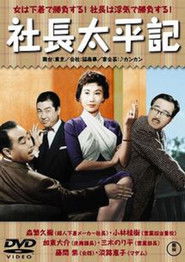
社長太平記
Sixth entry in the Company President Series.Year:
1959
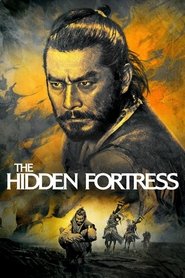
The Hidden Fortress
In feudal Japan, during a bloody war between clans, two cowardly and greedy peasants, soldiers of a defeated army, stumble upon a mysterious man who guides them to a fortress hidden in the mountains.Year:
1958
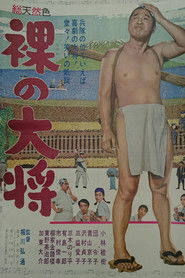
The Naked General
A film about the life of Kiyoshi Yamashita, a Japanese painter with disabilities.Year:
1958
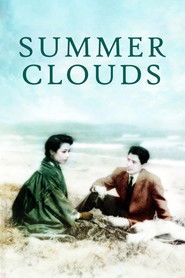
Summer Clouds
A war widow with a young boy manages a farm with her bossy mother-in-law. When a reporter comes to interview her, the two begin an affair. He turns out to be married and won't leave his wife. Her older brother tries to marry off his children and hang on to/ extend his farm through an advantageous marriage in the face of threatened land confiscation and the desire of his children to get comfortable urban jobs instead of the backbreaking work in the paddy fields under parental control.Year:
1958

Oban kanketsu hen
Ushinosuke returns to Tokyo with new ambitions. Fourth and final part of the film adaptation of Bunroku Shishi’s novel, Oban.Year:
1958
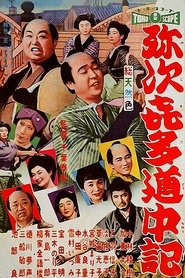
Yaji and Kita on the Road
Two residents of Edo city Yaji and Kita make a journey to the temple of Ise, as part of a religious pilgrimage, but actually to get away from their wives for a little while. As they travel, they are constantly beset by complications involving women, mistaken identity, and misunderstood events. Another film adaptation of the famous novel Ikku Jippensha Footing It Along the Tokaido (Tokaidochu Hizakurige)Year:
1958

The Third President
The fifth entry in the Company President SeriesYear:
1958

Song for a Bride
An Ishiro Honda film.Year:
1958

City of Love
Aiko, a bar hostess, falls for the son of a company president who also keeps a mistress, and whose family disapproves of his relationship with the bar hostess.Year:
1958

Assistant President
Year:
1958

Zokuzoku Ôban: Dotô hen
Ushinosuke returns to his hometown to become a farmer. Part three (of four) of the film adaptation of Bunroku Shishi’s novel, Oban.Year:
1957

Down Town
A woman struggles to raise her young son on her own in postwar Japan, finding companionship with a kind laborer while still hoping for the return of her missing husband.Year:
1957

The Living Koheiji
The actor Koheiji is terribly in love with the wife of his best friend, the playwright Takuro; to get her, he would even kill Takuro.Year:
1957

Zoku Ôban: Fûun hen
Ushinosuke returns broke to his hometown, where everyone believes he's rich and successful. Part two (of four) of the film adaptation of Bunroku Shishi's novel, Oban.Year:
1957

Price of Beauty
Melodrama about a young factory girl who "chooses riches over chastity".Year:
1957

Ôban
A young country boy leaves his village for Tokyo, where he begins to work as a stock trader. First part (of four) of the film adaptation of Bunroku Shishi's novel, Oban.Year:
1957

Flowing
Otsuta is running the geisha house Tsuta in Tokyo. Her business is heavily in debt. Her daughter Katsuyo doesn't see any future in her mother's trade in the late days of Geisha. But Otsuta will not give up. This film portraits the day time life of geisha when not entertaining customers.Year:
1956

はりきり社長
The third installment in the Shacho Series.Year:
1956

A Wife's Heart
Kiyoko (Takamine Hideko) and her husband want to open a coffee shop. She becomes increasingly close to the bank clerk (Mifune Toshiro) she's asked for a loan.Year:
1956

Settlement of Love
Living in a house that has lost its man to the war a year earlier are the widow and her child. Four of the dead man's friends gather to have an anniversary wake. Some time following the ceremony one of the attendees marries the widow. Soon another friend of the deceased and his family also make the house their home when they move to town. Everyone's life is changed quite a bit. When the newer husband sustains an injury to his leg and loses his job it leads to the wife having to work. By the time the fifth anniversary of the friend's death occurs and another reunion is held another friend is in love with the former widow.Year:
1956
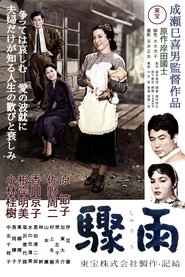
Sudden Rain
A husband and wife's pet peeves and minor irritations escalate into major rifts and animosity.Year:
1956

The First Kiss
Portmanteau film about young lovers.Year:
1955

Floating Clouds
A married Japanese forester during WWII is sent to Indochina to manage forests. He meets a young Japanese typist and promises to leave his wife. He doesn't and after the war, she turns up and the affair resumes.Year:
1955

Late Chrysanthemums
With delicate, unobtrusive strokes, Naruse evokes both the humor and bitterness of his characters’ dilemmas, in this bleak, compelling poignant portrait of a quartet of aging geishas contemplating their troubles with men and money.Year:
1954

Sound of the Mountain
An ingratiating bride develops warm ties to her father-in-law while her cold husband blithely slights her for another woman.Year:
1954

The Lovers
Comedy about a 50-something movie director, his new bride, a classical dancer, and his adult son and daughter and their loves.Year:
1953

The Blue Revolution
Year:
1953

Wife
Ten years into a marriage, the wife is disappointed by the husband's lack of financial success, meaning she has to work and can't treat herself and the husband finds the wife slovenly and mean-spirited: she neither cooks not cleans particularly well and is generally disagreeable. In turn, he alternately ignores her and treats her as a servant. Neither is particularly happy, not helped by their unsatisfactory lodgers. The husband is easily seduced by an ex-colleague, a widow with a small child who needs some security, and considers leaving his wife.Year:
1953

Mr. Pu
A math teacher loses his job while falling in love with a local girl.Year:
1953

Sunflower Girl
Young Setsuko Fujino begins a new job at Tokyo Chemical Company. She likes her boss, Ippei Hitachi, and enjoys serving him tea, despite the fact that her fellow workers think the women employees should not have to act in such a servile manner. When the women go on strike over the issue, Setsuko finds herself caught in the middle. When the heir to the company, Ryosuke Tanabe, proposes marriage to Setsuko, she is honored, but realizes that her real affection is for Hitachi.Year:
1953

Husband and Wife
A married couple looking for an apartment move in with the husband's co-worker, a widower. The husband becomes jealous of the widower and his wife.Year:
1953

The Woman Who Touched the Legs
A screwball tale of a suspected “lady thief” and the detective who is on her trail, following her from Osaka to her home village, where she is going to hold a memorial service for her father. Of course, the detective falls in love with his prey.Year:
1952

恐妻時代
Year:
1952

Tokyo Sweetheart
Following the Second World War, the lives of various people in a poverty-stricken area of Tokyo are entertwined. Pachinko parlor girls, shoeshine boys, a maker of costume jewelry, and a streetcorner artist all struggle to make their livings and to find happiness in difficult surroundings.Year:
1952
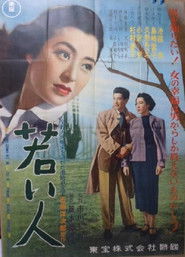
Forbidden Path
Year:
1952
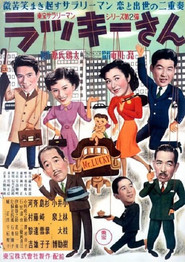
Mr. Lucky
Year:
1952

Wedding March
Melodrama by Kon IchikawaYear:
1951

Repast
Michiyo lives in the small place Osaka and is not happy with her marriage; all she does is cook and clean for her husband.Year:
1951
Wakôdo no uta
Year:
1951
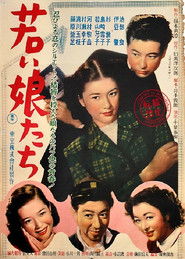
Wakai musumetachi
Year:
1951
Beyond the Hills
Adaptation of a novel by Yojiro Ishizaka, originally released in two parts.Year:
1950

Duel in the Sun
A film by Kiyoshi SaekiYear:
1950

Conduct Report on Professor Ishinaka
Three humorous love stories set in rural Japan.Year:
1950

The Blue Mountains: Part II
Continuation of The Blue Mountains: Part I. Released a week later.Year:
1949

The Blue Mountains: Part I
Teacher Yukiko finds herself in opposition to conservative faculty and villagers after defending a student for being in a relationship with a young man from Tokyo.Year:
1949
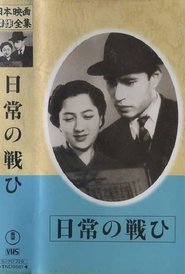
Nichijô no tatakai
Year:
1944
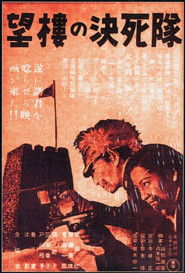
Suicide Troops of the Watchtower
Stalwart soldiers of the Japanese Empire – Japanese and Korean alike – stand in defense of a military outpost threatened by "bandits."Year:
1943

World of Love
A sixteen-year-old who had been living on her own since her mother died, frequently gets in trouble with the police. She gets sent to an "institute" for young girls in the countryside. There the residents grow their own food, cook and clean for themselves, and are taught language, music, and sewing. While there the young girl slowly begins to form friendships and come out of her shell.Year:
1943

Wings of Victory
Year:
1942

Hideko the Bus Conductress
Okoma, a witty young woman working as a conductor in an old, rickety bus in Kōfu, Yamanashi (rural Japan), has a creative idea that could avert the dwindling number of passengers when her job and the bus company itself are at stake.Year:
1941